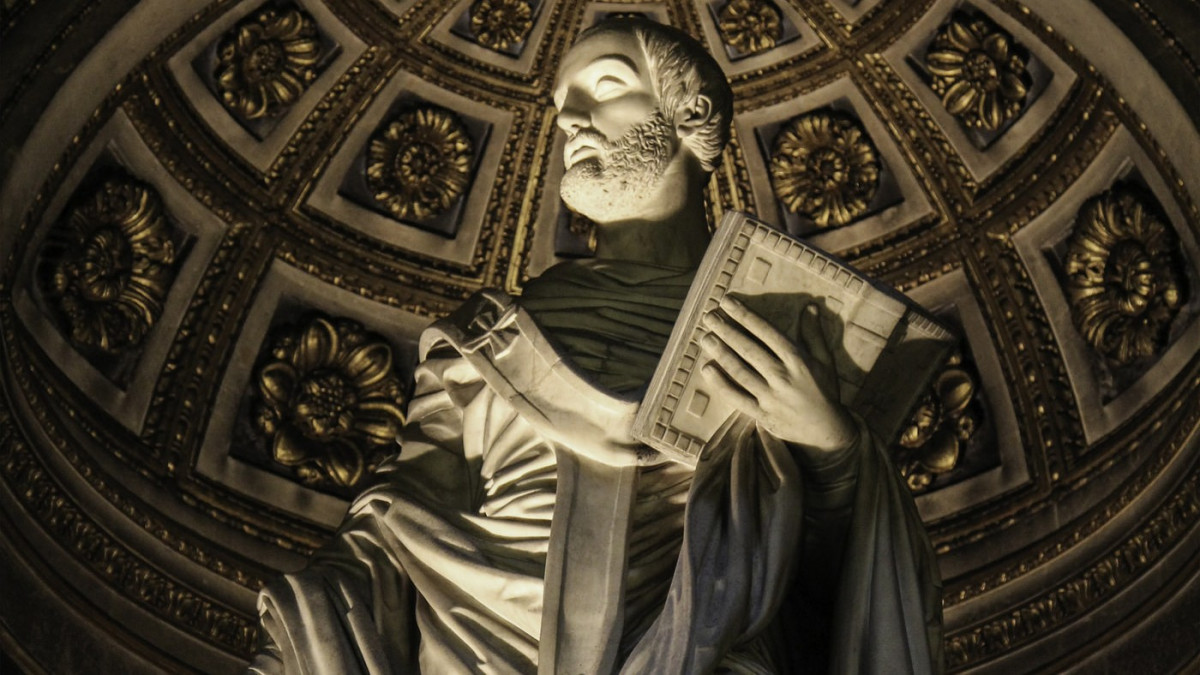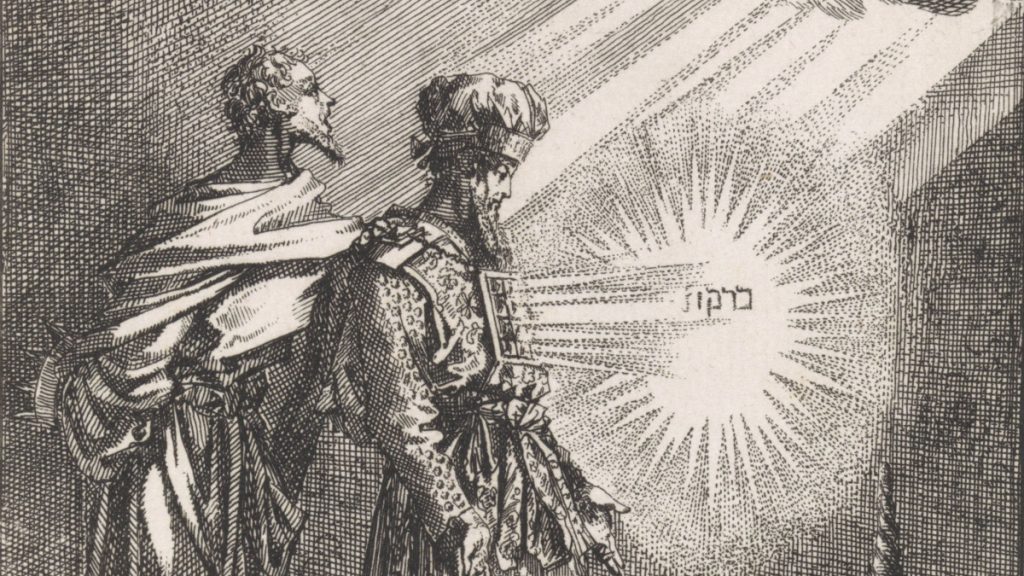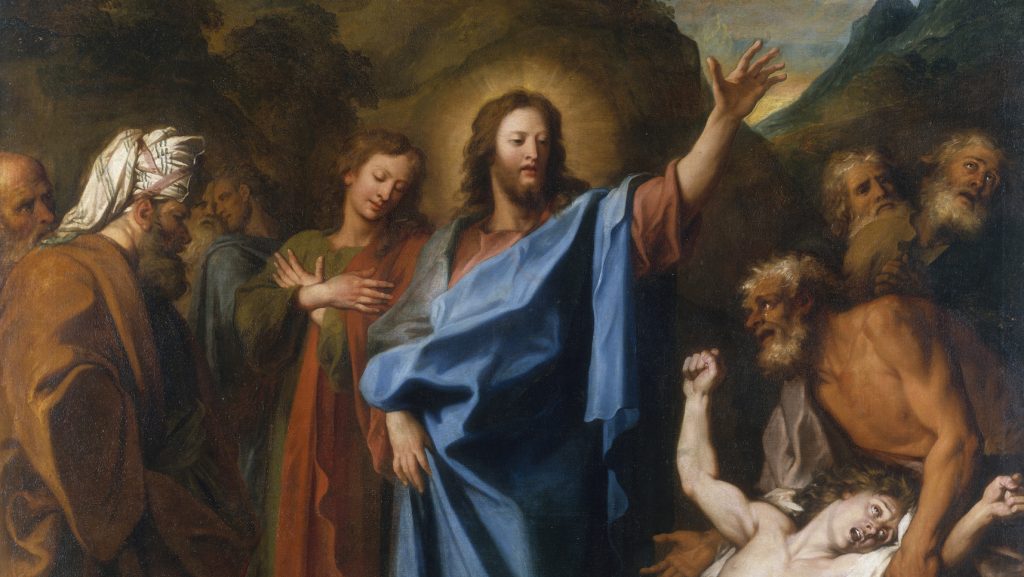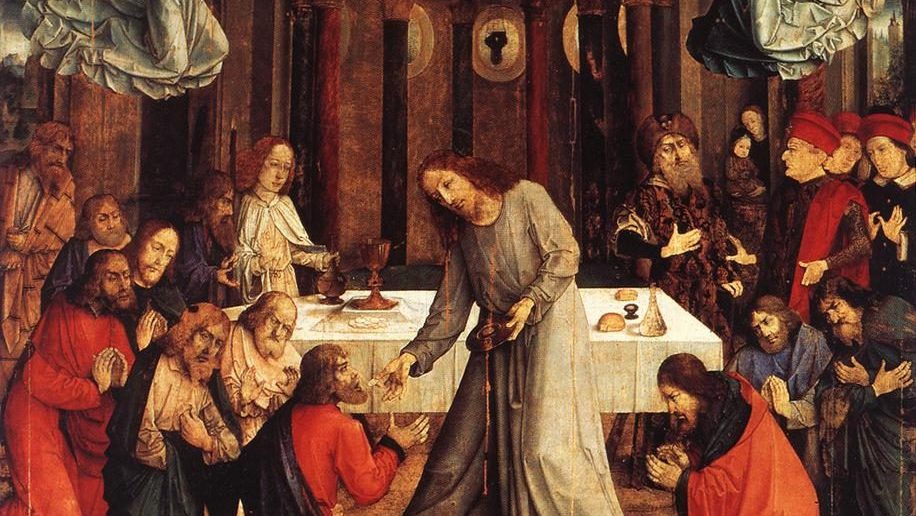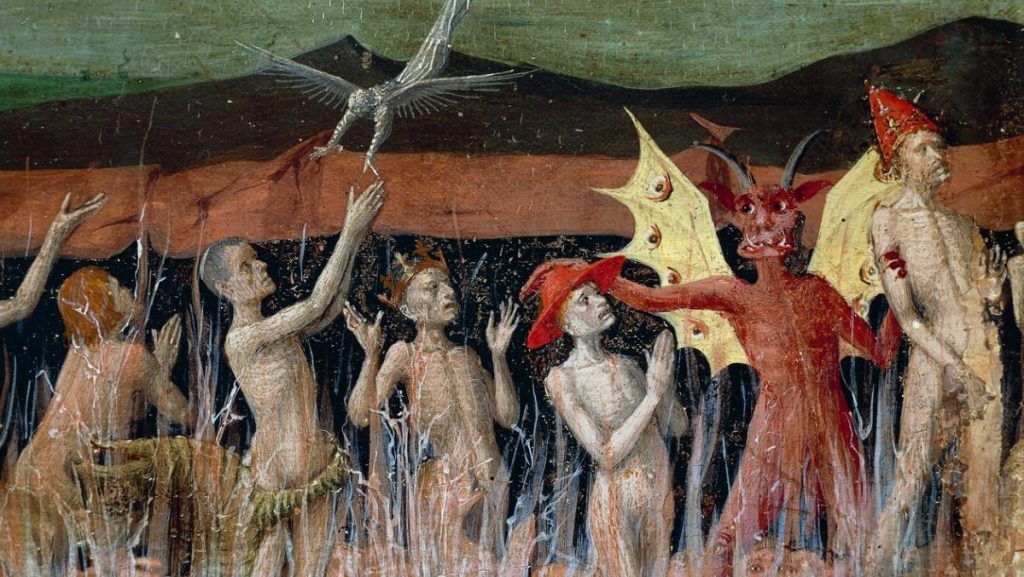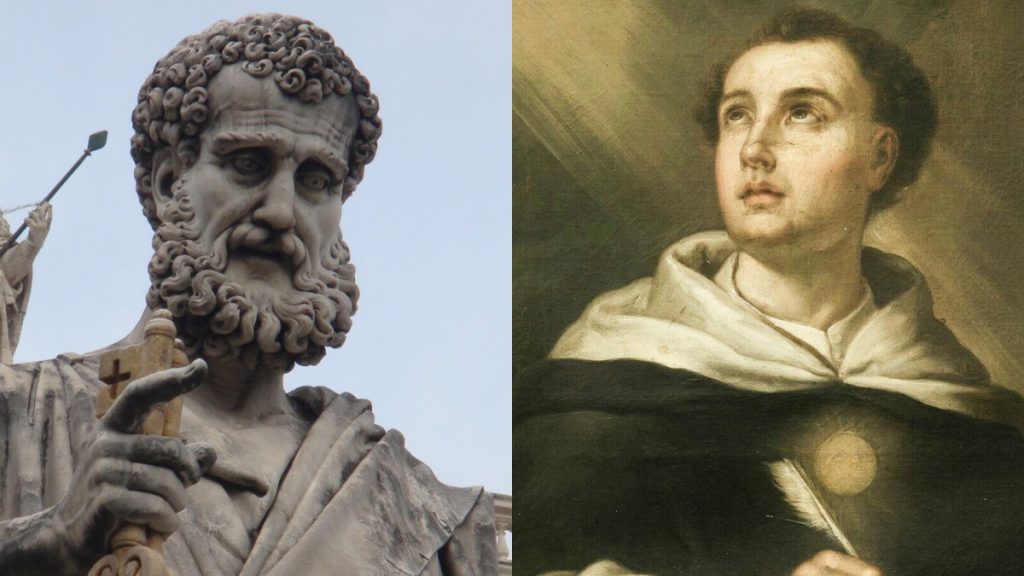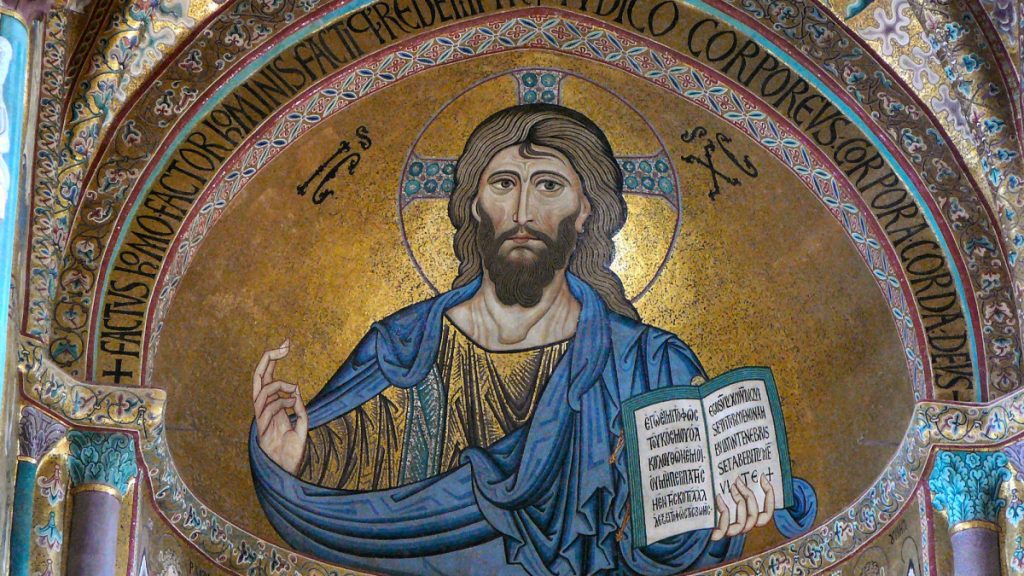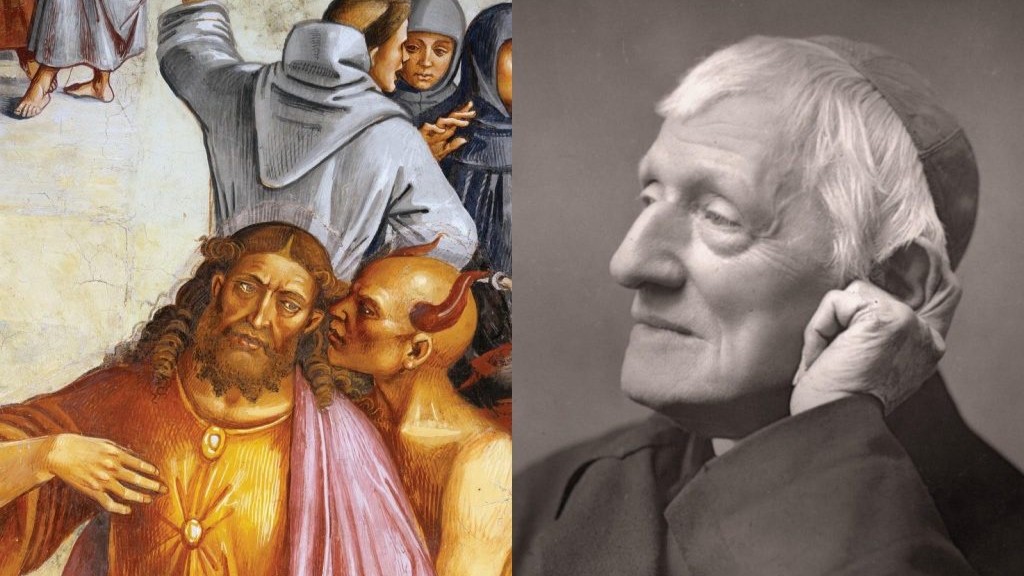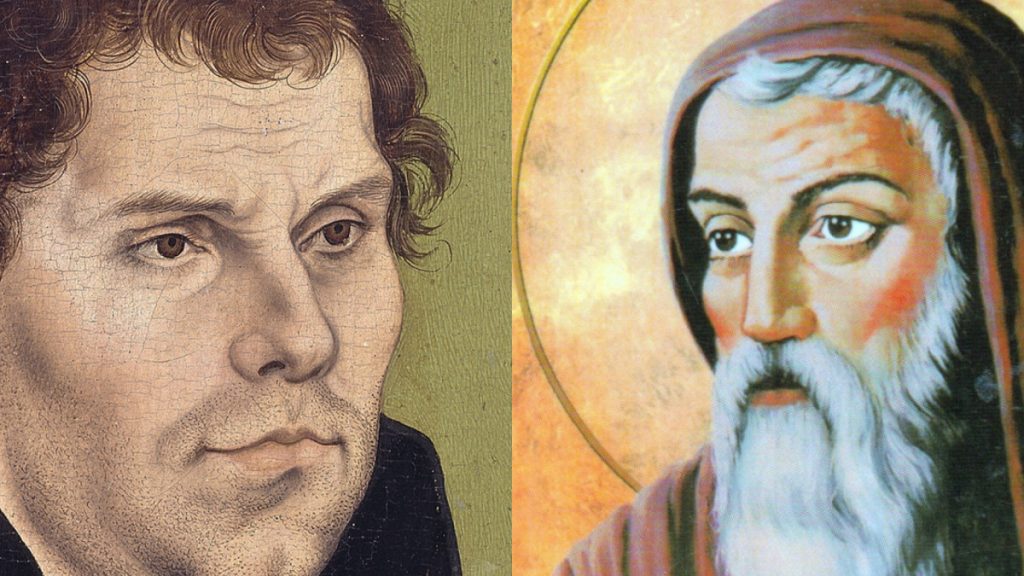Related Resources
Introduction
One of my biggest objections to the Catholic Church as a protestant was the fact of horrendous behavior and scandal in the Church, particularly from Her leaders. How was this consistent with Catholic claims of being the “one true Church”?
But as I read the Church Fathers, I realized that many of my presuppositions about what the “true Church” should be like were deeply influenced by protestant notions of the “invisible church” of the elect, rather than biblical notions of a visible Church with both good and wicked members within it, some of whom will inherit eternal life in Heaven, and some of whom will suffer eternal damnation in Hell.
The Church Fathers articulated a very different theology of the Church that they showed me was not only deeply biblical, but helped me understand the reality of evil within the one true Church which has been present from the beginning, and will continue until the very hour of Christ’s return. To weaponize this reality against the unity of the Church is, they said, among the defining marks of heretics and schismatics.
And what was perhaps most ironic is that the Church Father who articulated this theology most often and clearly was the very Church Father we protestants had often claimed for ourselves: St. Augustine.
Roadmap
With that background in mind, our Roadmap is as follows:
- Our thesis is that the Church Fathers, particularly St. Augustine, taught a theology of the Church that is both biblical, and deeply explanatory of the reality of wickedness and scandal within the one true Church, namely, the Catholic Church. We will show this by:
- First, summarizing the biblical basis for the patristic view of the Church, namely, that it is visible, and contains both good and evil members until Christ’s return, when the two will be definitively separated; then
- Second, quoting a powerful example of this theology from St. Augustine’s Letter 208; and finally
- Summarizing our conclusions, which will lay the groundwork for many more examples of this same theology throughout the writings of the Church Fathers.
The Patristic View of the Church: Good and Evil in One Visible Church
One of the most common objections against the Catholic Church is it is corrupt and full of wicked shepherds. This supposedly justified the protestant revolt, and people leaving the Church to this day. The argument often goes that whether through immoral living, or teaching bad doctrine, the Catholic Church may have been the original “mother church,” but it is now hopelessly corrupt, and the only way to respond to this problem is to separate from it.
But as I discovered when I began studying the Church Fathers, this is not a new objection. In fact, it’s a very old one, to which the Fathers offered a unanimous and resounding answer: separating from the Church is never justified.
The Fathers were under no illusions about the earthly pilgrimage of the Church. Like Israel’s forty-year journey through the wilderness on the way to the Promised Land, the Church Militant’s pilgrimage to Heaven would be difficult. Indeed, Christ said the way to Heaven was narrow, few find it [Matt. 7:14], and they only get there by taking up a cross [Matt. 16:24]. Our Lord predicted false prophets who would come in like wolves [Matt. 7:15], and they would deceive many, even (if possible) the elect [Matt. 24:24]. St. Paul prophesied there would be heresies that would arise among Christians in order to prove those who were genuine [1 Cor. 11:19]. He warned that wolves would infiltrate the flock [Acts 20:29], and that many will follow teachers who suit their own likings [2 Tim. 4:3-4].
But despite all these challenges, the Fathers consistently asserted that, like Israel in the wilderness, the Catholic Church would remain itself throughout all its tribulations, none of which would change its fundamental nature, or justify separating from it. Amalek could not destroy it from without, and Korah, Dathan, and Abiram could not destroy it from within. There was to be no “re-founding” of Israel, or branching off from it. There was one and only one Israel, founded by God Himself, on a pilgrimage to the Promised Land. Those who endured to the end within this people would see the promise.
We see this reality constantly affirmed by Christ and the Apostles, whose words and promises were the basis for the ecclesiology of the Church Fathers. For example:
- Christ described the Church as a kingdom ruled by apostolic thrones (Matt. 19:28; Luke 22:28-30; Apoc. 20:4; cf. Ps. 122:3-5)
- Christ promised to be with this apostolic kingdom (Matt. 28:20), to guide it into all truth (John 16:13), to provide its judgments heavenly backing (Matt. 16:19, 18:18; cf. Jer. 33:15), and ensure it will never be defeated (Matt. 16:18).
- He promised it will encompass all nations (Isa. 2:2), that it will make some of the Gentiles “priests and Levites” (Isa. 66:21), and that they will offer a pure sacrifice within it (Mal. 1:11).
- He called this kingdom a city on a hill that cannot be hidden (Matt. 5;14), and the pillar and bulwark of the truth (1 Tim. 3:15).
All these promises of divinely guaranteed permanence, guidance, and invincibility stand alongside the predictions of struggle without and within. This impregnable Church, like Israel, is full of both the righteous and the unrighteous throughout its earthly pilgrimage. The Fathers describe this dynamic by appealing to several types in Scripture:
- Noah’s ark, a type of the Church, with its clean and unclean animals [Gen. 7:2, 8];
- The “threshing floor” of the Lord, referring to the threshing floor that David purchased to build the Temple (the Catholic Church is the third, New Covenant Temple), and on which wheat is crushed so that it can eventually be separated from the chaff [2 Sam. 24:18-25; 2 Chron. 21:18-27];
- The sheep and the goats within the one flock [Matt. 25:31-46]; and
- The good and bad fish caught in the one net [Matt. 13:47-50];
- The “wheat” and the “tares” growing alongside one another [Matt. 13:24-30]; among many others.
In short, while the Church on earth is full of the good and the evil during its pilgrimage to the “Holy Land” (Heaven, and ultimately the New Heavens and the New Earth), it was also permanent and unchanging in its essential nature.
The ecclesiology of the Fathers drew extensively from the Old Testament on this point. For example, the prophets spoke of the Messiah’s kingdom as an everlasting kingdom. Daniel, in particular, prophesied that in the days of the Romans, “the God of heaven will set up a kingdom which shall never be destroyed, nor shall its sovereignty be left to another people. It shall break in pieces all these kingdoms and bring them to an end, and it shall stand forever” (Dan. 2:44).
Likewise, Isaiah prophesied, “It shall come to pass in the latter days that the mountain of the house of the Lord shall be established as the highest of the mountains, and shall be raised above the hills; and all the nations shall flow to it…” (Isa. 2:2). This mountain, the Fathers asserted, was the Catholic Church.
In short, the Fathers well knew that the Church was the everlasting kingdom established by God, that it spanned both Heaven and earth, and its earthly portion would be guided by Christ until his return [Matt. 28:20].
At the same time, this earthly portion (the Church Militant) would be full of good and evil, righteous and unrighteous, sheep and goats, wheat and chaff, clean and unclean, until the Lord Himself returned and separated the two for all eternity.
The Fathers knew–both theoretically, and from their own experience–that there would be scandalous behavior from bishops and priests, sometimes even Popes! After all, of the twelve Apostles (the original bishops) appointed by Our Lord, one outright betrayed him (Judas), and all but St. John abandoned Him at His greatest hour of need.
But just as unfaithful Israelites did not make Israel any less Israel, unfaithful Catholics do not make the Catholic Church any less the one true Church established by Christ. Scripture makes abundantly clear there is only one Body of Christ—which is the Church—and there is only one Church preaching only one Faith. To speak in Old Testament terms, no matter how corrupt their fellow Israelites or their priests would get, faithful Israelites had no right to presume to establish the kingdom of Israel anywhere else other than in the Holy Land, or build the Temple anywhere else other than in Jerusalem. These had been determined by God Himself, just as Christ Himself determined that the Church on earth would be governed by the Apostles and their successors. In both Testaments, God reserves to Himself the prerogative of dealing with corrupt shepherds.
For example, in Ezekiel, he states: “If I say to the wicked, O wicked man, you shall surely die, and you do not speak to warn the wicked to turn from his way, that wicked man shall die in his iniquity, but his blood I will require at your hand” (Ez. 33:8).
And in the book of Hebrews, the Apostles commands: “Obey your leaders and submit to them; for they are keeping watch over your souls, as men who will have to give account” (Heb. 13:17).
This is why the Church Fathers everywhere taught the necessity of unity with the Church for salvation (see Becoming Catholic #18), and that the Catholic Church was that one true Church (see Becoming Catholic #22).
Therefore, for a Christian to presume to re-found, re-form, or re-do what God Himself has established by teaching other than what the Catholic Church teaches (heresy) or by separating from the Catholic Church (schism) is folly. It is a form of ecclesial utopianism that, in its quest for a “pure church,” has murdered countless souls in the same way political utopianism has murdered countless bodies.
There are many examples of this theology throughout the Fathers. For now, we will simply share some relevant sections from a powerful letter of St. Augustine written in 423 to a consecrated virgin who was scandalized by the behavior of bishops in her own time. One can recognize in this letter that while the severity of sin may increase or decrease in particular epochs, there is truly “nothing new under the sun” (Ecc. 1:9).
St. Augustine’s Letter 208
This theology of the Church is articulated most frequently and precisely by St. Augustine. One particularly god example of it comes from his words to “Lady Felicia,” from Letter 208 (§§2-4, 6-7):
(§2) I exhort you, therefore, not to be too much troubled by those offenses which for this very reason were foretold as destined to come, that when they came we might remember that they had been foretold, and not be greatly disconcerted by them. For the Lord Himself in His gospel foretold them, saying, “Woe unto the world because of offenses! For it must needs be that offenses come; but woe unto that man by whom the offense comes!” (Matt. 18:7). These are the men of whom the apostle said, “They seek their own, not the things that are Jesus Christ’s” (Phil. 2:21). There are, therefore, some who hold the honorable office of shepherds in order that they may provide for the flock of Christ; others occupy that position that they may enjoy the temporal honors and secular advantages connected with the office. It must needs happen that these two kinds of pastors, some dying, others succeeding them, should continue in the Catholic Church even to the end of time, and the judgment of the Lord. If, then, in the times of the apostles there were men such that Paul, grieved by their conduct, enumerates among his trials, “perils among false brethren” (1 Cor. 11:26), and yet he did not haughtily cast them out, but patiently bore with them, how much more must such arise in our times, since the Lord most plainly says concerning this age which is drawing to a close, “that because iniquity shall abound the love of many shall wax cold” (Matt. 24:12-13). The word which follows, however, ought to console and exhort us, for He adds, “He that shall endure to the end, the same shall be saved” (Matt. 24:13).
(§3) Moreover, as there are good shepherds and bad shepherds, so also in flocks there are good and bad. The good are represented by the name of sheep, but the bad are called goats: they feed, nevertheless, side by side in the same pastures, until the Chief Shepherd, who is called the One Shepherd, shall come and separate them one from another according to His promise, “as a shepherd divides the sheep from the goats” (Matt. 25:32). On us He has laid the duty of gathering the flock; to Himself He has reserved the work of final separation, because it pertains properly to Him who cannot err. For those presumptuous servants, who have lightly ventured to separate before the time which the Lord has reserved in His own hand, have, instead of separating others, only been separated themselves from Catholic unity; for how could those have a clean flock who have by schism become unclean?
(§4) In order, therefore, that we may remain in the unity of the faith, and not, stumbling at the offenses occasioned by the chaff, desert the threshing-floor of the Lord, but rather remain as wheat till the final winnowing [Matt. 3:12], and by the love which imparts stability to us bear with the beaten straw, our great Shepherd in the gospel admonishes us concerning the good shepherds, that we should not, on account of their good works, place our hope in them, but glorify our heavenly Father for making them such; and concerning the bad shepherds (whom He designed to point out under the name of Scribes and Pharisees), He reminds us that they teach that which is good though they do that which is evil [Matt. 3:12]…
(§6) Hence we understand both that the good shepherds are those who seek not their own, but the things of Jesus Christ, and that the good sheep, though imitating the works of the good shepherds by whose ministry they have been gathered together, do not place their hope in them, but rather in the Lord, by Whose blood they are redeemed; so that when they may happen to be placed under bad shepherds, preaching Christ’s doctrine and doing their own evil works, they will do what they teach, but will not do what they do, and will not, on account of these sons of wickedness, forsake the pastures of the one true Church. For there are both good and bad in the Catholic Church, which, unlike the Donatist sect, is extended and spread abroad, not in Africa only, but through all nations; as the apostle expresses it, “bringing forth fruit, and increasing in the whole world” (Col. 1:6). But those who are separated from the Church, as long as they are opposed to it cannot be good; although an apparently praiseworthy conversation seems to prove some of them to be good, their separation from the Church itself renders them bad, according to the saying of the Lord: “He that is not with me is against me; and he that gathers not with me scatters” (Matt. 12:30).
(§7) Therefore, my daughter, worthy of all welcome and honor among the members of Christ, I exhort you to hold faithfully that which the Lord has committed to you, and love with all your heart Him and His Church who suffered you not, by joining yourself with the lost, to lose the recompense of your virginity, or perish with them. For if you should depart out of this world separated from the unity of the body of Christ, it will avail you nothing to have preserved inviolate your virginity…Committing to Him your heart, your vow, and your sacred virginity, and your faith, hope, and charity, you will not be moved by offenses, which shall abound even to the end; but, by the unshaken strength of piety, shall be safe and shall triumph in the Lord, continuing in the unity of His body [the Church] even to the end.
Conclusion
From the above, we can see that St. Augustine had a robust theology of wickedness within the one true Church, and how Christians should respond to it. In short, he believed:
- The Catholic Church would endure to the end;
- Every Christian has a duty to maintain the unity of the Catholic Church;
- Within the Catholic Church there are good and evil members (“wheat” and “chaff,” or “tares”);
- The “wheat” within the Church can become “chaff” through sin, and the “chaff” can becoming “wheat” by repentance;
- The “wheat” should never leave the Catholic Church on account of the “chaff” within;
- Despite the changing fortunes of “wheat” and “chaff,” the one “threshing floor” of the Church will remain forever;
- The “wheat” and the “chaff” will exist alongside one another in the Catholic Church until Christ’s return, and thus there is no excuse to presume to definitively separate them prior to that time, which is one of the defining characteristics of heretics and schismatics.
